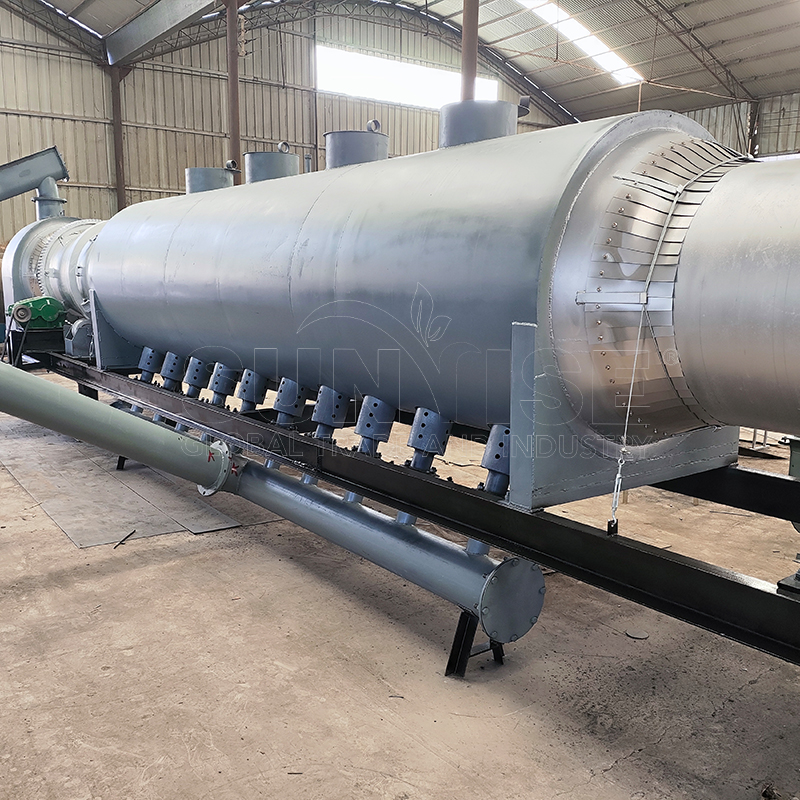The materials suitable for a continuous carbonization production line include:
Wood: This category includes tree trunks, wood chips, sawdust, and wood waste.
Nutshells: Nutshells like coconut shells, hazelnut shells, walnut shells, л“ұ.
Agricultural Residues: These are primarily agricultural residues such as rice straw, л°Җм§ҡ, and corn straw.
Waste Paper Pulp Residue: Waste materials like pulp residue can also be converted into activated carbon.

The typical steps in a continuous carbonization production line include:
Raw Material Preparation: Raw materials are first processed to remove impurities, and they may be crushed to prepare for entry into the carbonization furnace.
нғ„нҷ”: Raw materials undergo carbonization within a continuous carbonization furnace. This step typically occurs under high temperature and low oxygen conditions to transform the raw materials into carbon.
Cooling and Collection: After carbonization, the produced carbon material needs to be cooled. In a continuous production line, cyclone coolers or other cooling equipment are often used to reduce the temperature. Following cooling, the carbon material is collected and packaged.
Environmental Management: During the carbonization process, it’s essential to manage the treatment of waste gases and residues to minimize the environmental impact.
These steps are crucial in the production of activated carbon and other carbon-based materials in a continuous carbonization production line, welcome to contact us for more details.
 нғ„нҷ” кё°кі„пјҢмҲҜ л§Ңл“ңлҠ” кё°кі„
нғ„нҷ” кё°кі„пјҢмҲҜ л§Ңл“ңлҠ” кё°кі„